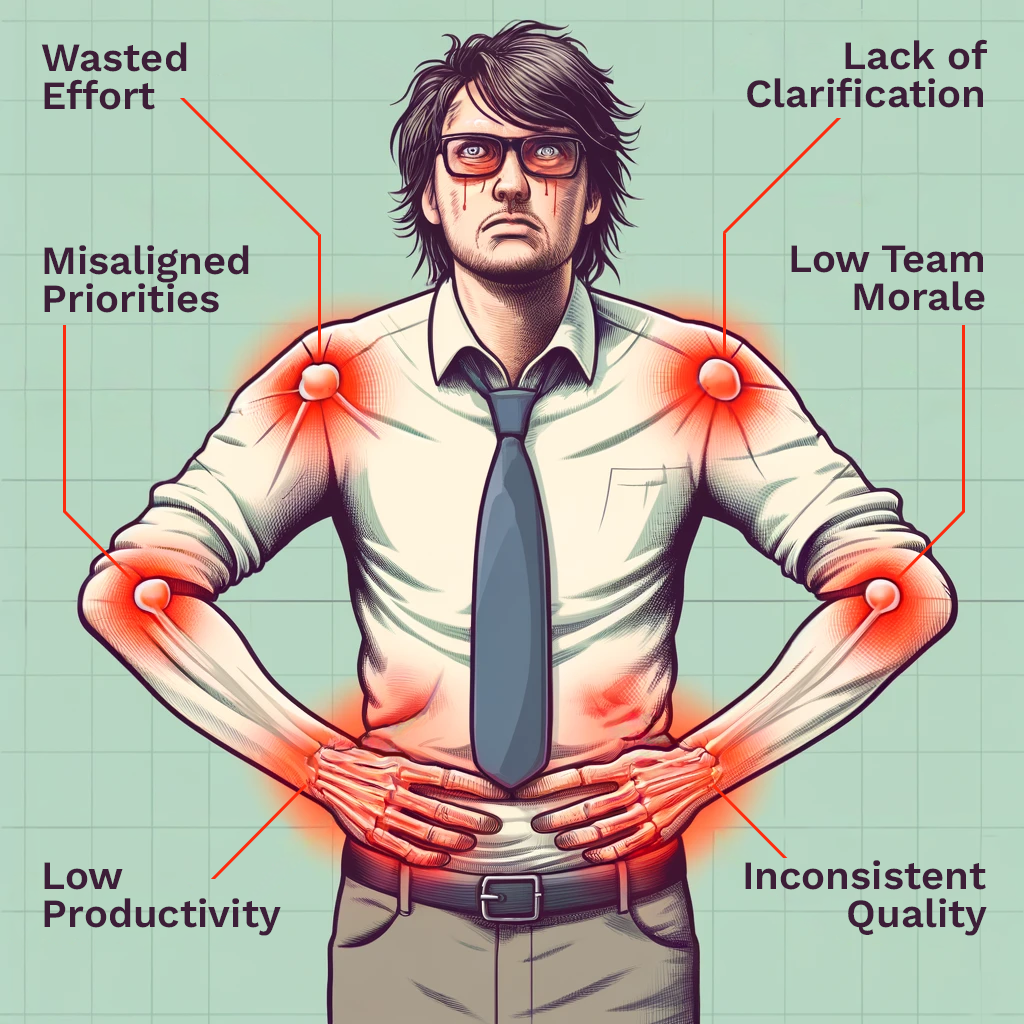
Starting Strong: The Agile Way to Software Success
In the fast-paced world of software development, the adoption of agile methodologies has revolutionized how teams approach their work. Agile software development is more than just a set of practices or methodologies; it’s a mindset that embraces flexibility, continuous improvement, and customer-centric design. At its core, agile development is guided by four key principles outlined in the Agile Manifesto:
- Individuals and interactions over processes and tools
- Working software over comprehensive documentation
- Customer collaboration over contract negotiation
- Responding to change over following a plan
These principles emphasize the importance of adaptability, team collaboration, and the delivery of tangible, valuable products to customers. Agile teams strive to break down silos, encourage open communication, and adapt swiftly to changing requirements, all with the goal of enhancing product quality and customer satisfaction.
Mastering the Craft of Agile Leadership through Player Coaching
Amidst these agile practices, the concept of “player coaching” emerges as a transformative approach to leadership and teamwork. Rather than drawing on the commonly cited sports analogy, let’s consider a more tradesman-like perspective. In this context, a player coach resembles a master craftsman who not only designs the blueprint but also actively participates in the creation process alongside their apprentices. This hands-on leader imparts their knowledge and skills directly through daily work, guiding the team not from the sidelines but from within the trenches.
The player coach in an agile software development team plays a similar role, blending leadership with active participation. This approach fosters a learning environment where knowledge and skills are dynamically shared and applied. Team members are not just given instructions but are mentored through the complexities of their tasks, benefiting from the immediate feedback and real-world experience of their coach. This model encourages a culture of continuous learning and improvement, where the lines between teaching and doing become instinct, leading to innovation, efficiency, and enhanced team performance.
As we delve deeper into the role and benefits of player coaching within agile software development, we’ll explore how this approach can catalyze growth, foster resilience, and drive the agile ethos of adaptability and customer-focused development. This journey begins with understanding the unique position of a player coach and how they embody the agile principles through their dual role as both a mentor and an active contributor.
Addressing the Gaps: How Player Coaching Solves Common Team Challenges
In many team environments, particularly in agile software development, common challenges include inconsistent work quality and fluctuating productivity. Traditional training methods and hierarchical leadership often struggle to adequately address these issues. Player coaching emerges as a transformative solution, reshaping how teams learn, work, and improve. This section explores how player coaching directly tackles these challenges, fostering a culture of high-quality output and efficient productivity.
Enhancing Consistency and Quality
Inconsistent quality in project outputs can significantly impact the success of software development efforts. Player coaches, through their deep involvement in daily tasks, are ideally positioned to standardize best practices and ensure high standards are consistently met across the board. By actively participating in the workflow, they can immediately identify and correct deviations, effectively coaching team members in real-time to adhere to quality standards. This hands-on approach ensures that all team members understand and implement the desired quality benchmarks consistently.
Boosting Productivity
Productivity can be hindered by various factors, including inefficient workflows, lack of engagement, or unclear objectives. Player coaches address these issues by being integral to the workflow itself, enabling them to swiftly identify bottlenecks and implement solutions. Their unique position allows them to adjust processes on the fly, minimize downtime, and maintain momentum. Furthermore, their active participation serves as a motivational force within the team, showing commitment and fostering a supportive environment that encourages team members to excel.
Fostering a Culture of Continuous Improvement
Continuous improvement is a cornerstone of agile methodologies, and player coaches are pivotal in instilling this mindset. By leading from within the team, they not only demonstrate their commitment to seeking and implementing enhancements but also encourage their team members to proactively look for ways to improve. This culture of innovation and adaptation becomes ingrained within the team, making it well-equipped to respond to changing requirements and new challenges effectively.
Player coaching, by addressing these critical areas, offers a practical and impactful approach to overcoming some of the most common challenges faced by software development teams. This methodology not only elevates the team’s current performance but also equips it with the tools and attitudes necessary for sustained future success.
Implementing Player Coaching: Mastering the Craftsman’s Approach in Agile Teams
Implementing player coaching in an agile software development environment can draw valuable parallels from the tradesman approach, where mastery and apprenticeship play crucial roles. This section outlines practical steps for embedding player coaching into agile teams, ensuring the strategy enhances both individual growth and collective success.
Selecting the Right Coach: Identifying the Master Craftsman

Choosing the right player coach is akin to selecting a master craftsman who not only possesses deep technical skills but also embodies the agile spirit of collaboration and continuous improvement. The ideal candidate should have:
- Proven expertise in software development: Demonstrable skills and a thorough understanding of both the technical and strategic facets of the projects at hand
- Strong interpersonal skills: Ability to communicate effectively, resolve conflicts, and inspire team members
- An agile mindset: Commitment to agile principles like flexibility, responsiveness, and customer focus
Balancing Coaching and Contributing: The Craftsman’s Dual Role
- Setting clear expectations: Establish that the coach’s role is to provide guidance while actively contributing to the work, ensuring that their leadership enhances team performance without overshadowing team contributions
- Time management: Allocate specific times for coaching and separate times for hands-on work, ensuring that neither responsibility is neglected
- Feedback and assessment: Regularly assess both the progress of the project and the development of team skills, adjusting coaching methods and contributions as necessary
Integrating Player Coaching with Agile Methodologies: Tools and Techniques
To weave the craftsman’s approach into agile practices effectively, consider the following tools and techniques:
- Daily stand-ups: Utilize these meetings for the coach to briefly assess progress, address immediate challenges, and provide quick, actionable feedback
- Pair programming: Encourage the player coach to engage in pair programming regularly, offering a hands-on method for skill transfer and real-time problem-solving
- Retrospectives: Use these sessions for the team and coach to reflect on what worked well and what needs improvement, focusing on how the coaching relationship can grow and adapt
Creating a Supportive Environment: The Workshop Culture
Just as a craftsman cultivates a workshop where apprentices can thrive, player coaches should foster an environment that encourages learning and experimentation:
- Encouraging questions and curiosity: Make it safe for team members to ask questions and propose solutions, reinforcing that the team’s growth is a priority
- Promoting trial and error: Encourage team members to try new methods under the guidance of the coach, learning from mistakes without fear of repercussions
Implementing player coaching using the craftsman analogy in agile teams can profoundly impact the development process and team dynamics. By carefully selecting the right coach, balancing their roles effectively, integrating agile methodologies, and fostering a supportive team environment, organizations can maximize the benefits of this approach, ultimately leading to more successful and adaptable software development teams.
To lead people, walk beside them… As for the best leaders, the people do not notice their existence. When the best leader’s work is done, the people say, ‘We did it ourselves!’
Lao Tzu
Agile Reflections: Beyond the Basics with Player Coaching
The adoption of player coaching in agile software development teams represents a significant shift towards a more integrated and participatory form of leadership and learning. Drawing from the craftsman analogy, where the master not only instructs but also actively participates in the crafting process, player coaches immerse themselves within teams, working side-by-side with team members. This method proves instrumental in addressing several persistent challenges in agile environments, such as enhancing consistency in output quality, increasing productivity, and fostering a culture of continuous improvement.
In conclusion, player coaching encapsulates the essence of agile methodology by emphasizing adaptability, continuous learning, and a deeply collaborative approach to project management. Organizations looking to enhance their agile practices may find that incorporating player coaching into their teams not only accelerates their developmental processes but also enriches their team dynamics, leading to more innovative solutions and a stronger, more cohesive workforce. As agile methodologies continue to evolve, the role of the player coach will likely become increasingly central in shaping the future of software development teams, steering them towards greater efficiency and success.

Ready to take your team’s agile development to the next level?
At Integral, we’re passionate about propelling software teams towards peak performance with hands-on, collaborative leadership, so if you’re keen to explore innovative strategies that will enhance your team dynamics, improve project outcomes, and fast-track your path to value, let’s connect. We’d love to discuss how we can help you craft a future where your projects thrive on adaptability, learning, and collective success!

